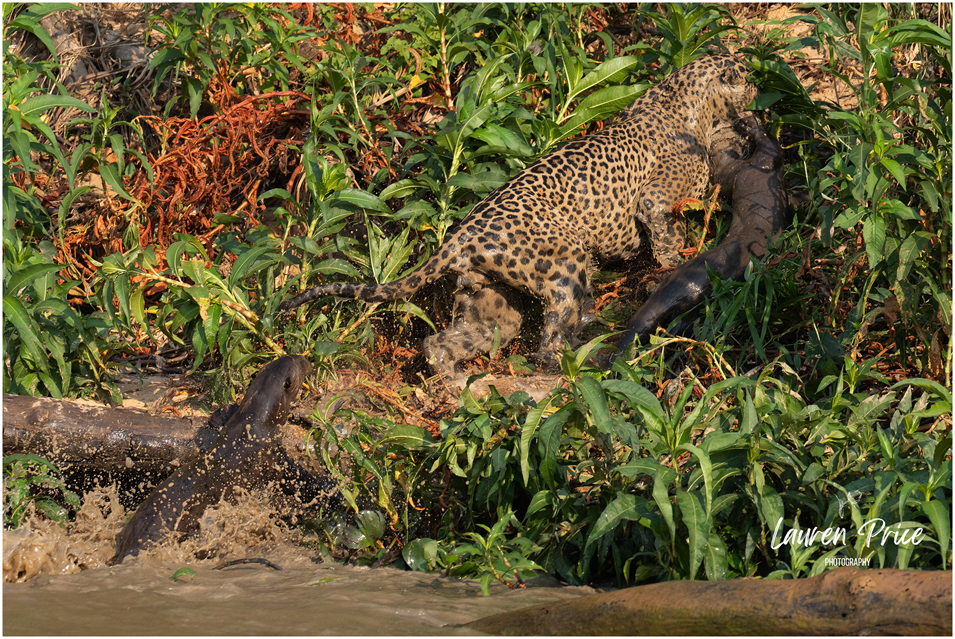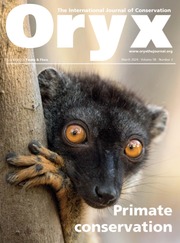The region of Porto Jofre in the Brazilian Pantanal is renowned for jaguar watching, and is known locally as Jaguar Land. Although tourism can promote biodiversity conservation, when poorly managed and focused on a single species, it can negatively impact others. The giant otter Pteronura brasiliensis is categorized as Endangered on the IUCN Red List. It is social, diurnal and charismatic, attracting attention from wildlife enthusiasts. But unregulated tourism and the presence of boats threaten the species by potentially impairing the care and movement of offspring. Climate change is also an emerging threat: in 2020, fires devastated 90% of the region during the giant otter breeding season. Of the six groups monitored by the Giant Otter Project, only one pup survived, and it did not live beyond the next year. Drought exacerbated the situation, and no breeding occurred in 2021. In 2022, only one of seven monitored groups had pups, with a 50% survival rate. In 2023, a long-established group failed to raise its litter in a heavily visited jaguar-watching area, and in 2024 a new threat emerged: predation by jaguars.
From July 2024 to December 2024, six giant otters were predated by jaguars, including five pups and a lactating adult female. Although predation is natural, the giant otter is not the jaguar's primary prey in the Pantanal (Perilli et al., 2016, PLOS One, 11, e0151814). These events highlight concerns about the effects of human activity and climate pressures on species interactions and ecological balance, creating a dilemma for decision-makers when adopting conservation strategies involving these two threatened predators. Since 2019, the Giant Otter Project has monitored the giant otter population in Porto Jofre and other regions of the Pantanal, Cerrado and Amazon, seeking to understand how the species is coping with these threats. The Project has also implemented conservation strategies, including guidelines for species observation and training for tourism professionals. However, greater engagement from local stakeholders and authorities is needed, along with the enforcement of tourism management guidelines that consider all species. Strategies include creating refuge zones with restricted access during breeding seasons, setting limits on boat and visitor numbers, and monitoring boat movements. These and other measures are essential for conserving biodiversity in tourist areas such as Porto Jofre and ensuring the sustainability of wildlife-watching tourism.

Adult female giant otter being preyed upon by a male jaguar in Porto Jofre, Northern Pantanal, Brazil. Photo: Lauren Price.


